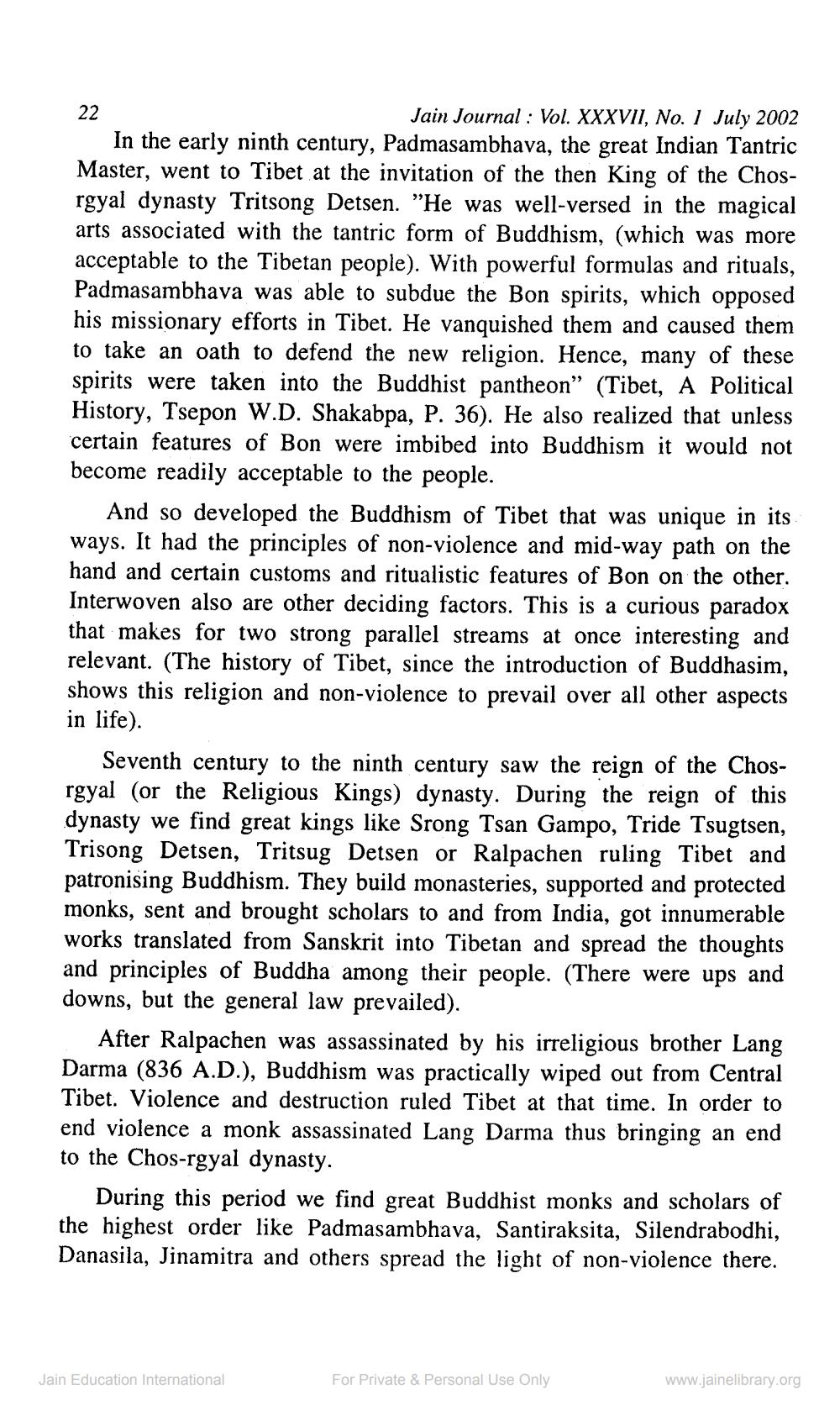________________
Jain Journal: Vol. XXXVII, No. 1 July 2002 In the early ninth century, Padmasambhava, the great Indian Tantric Master, went to Tibet at the invitation of the then King of the Chosrgyal dynasty Tritsong Detsen. "He was well-versed in the magical arts associated with the tantric form of Buddhism, (which was more acceptable to the Tibetan people). With powerful formulas and rituals, Padmasambhava was able to subdue the Bon spirits, which opposed his missionary efforts in Tibet. He vanquished them and caused them to take an oath to defend the new religion. Hence, many of these spirits were taken into the Buddhist pantheon" (Tibet, A Political History, Tsepon W.D. Shakabpa, P. 36). He also realized that unless certain features of Bon were imbibed into Buddhism it would not become readily acceptable to the people.
22
And so developed the Buddhism of Tibet that was unique in its ways. It had the principles of non-violence and mid-way path on the hand and certain customs and ritualistic features of Bon on the other. Interwoven also are other deciding factors. This is a curious paradox that makes for two strong parallel streams at once interesting and relevant. (The history of Tibet, since the introduction of Buddhasim, shows this religion and non-violence to prevail over all other aspects in life).
Seventh century to the ninth century saw the reign of the Chosrgyal (or the Religious Kings) dynasty. During the reign of this dynasty we find great kings like Srong Tsan Gampo, Tride Tsugtsen, Trisong Detsen, Tritsug Detsen or Ralpachen ruling Tibet and patronising Buddhism. They build monasteries, supported and protected monks, sent and brought scholars to and from India, got innumerable works translated from Sanskrit into Tibetan and spread the thoughts and principles of Buddha among their people. (There were ups and downs, but the general law prevailed).
After Ralpachen was assassinated by his irreligious brother Lang Darma (836 A.D.), Buddhism was practically wiped out from Central Tibet. Violence and destruction ruled Tibet at that time. In order to end violence a monk assassinated Lang Darma thus bringing an end to the Chos-rgyal dynasty.
During this period we find great Buddhist monks and scholars of the highest order like Padmasambhava, Santiraksita, Silendrabodhi, Danasila, Jinamitra and others spread the light of non-violence there.
Jain Education International
For Private & Personal Use Only
www.jainelibrary.org




